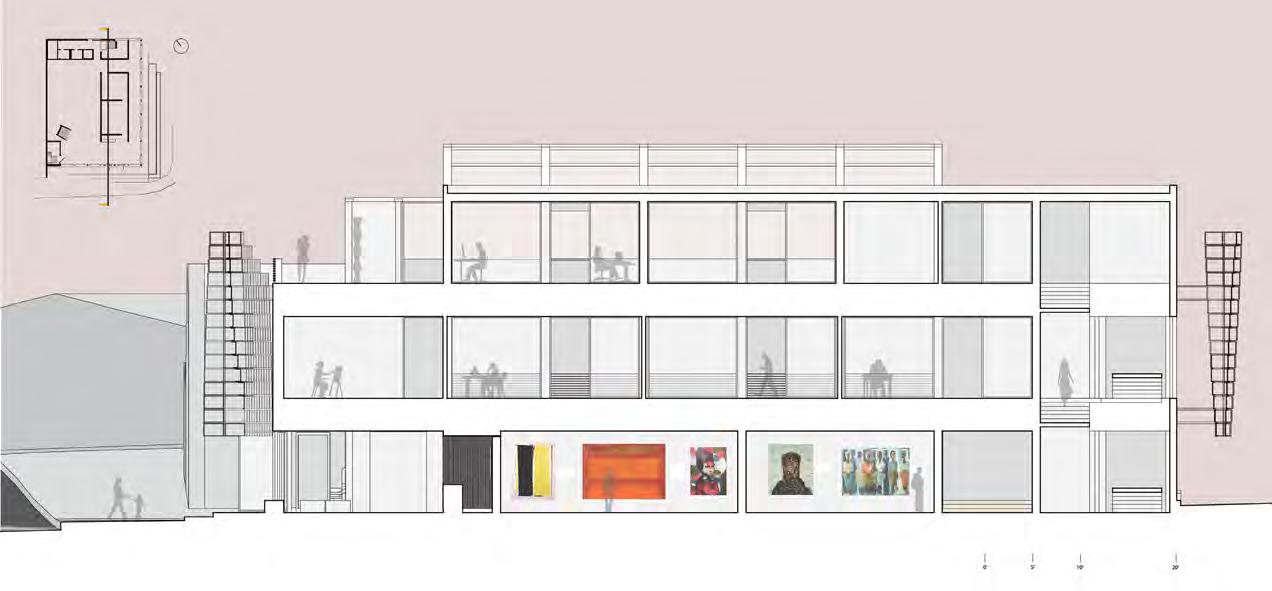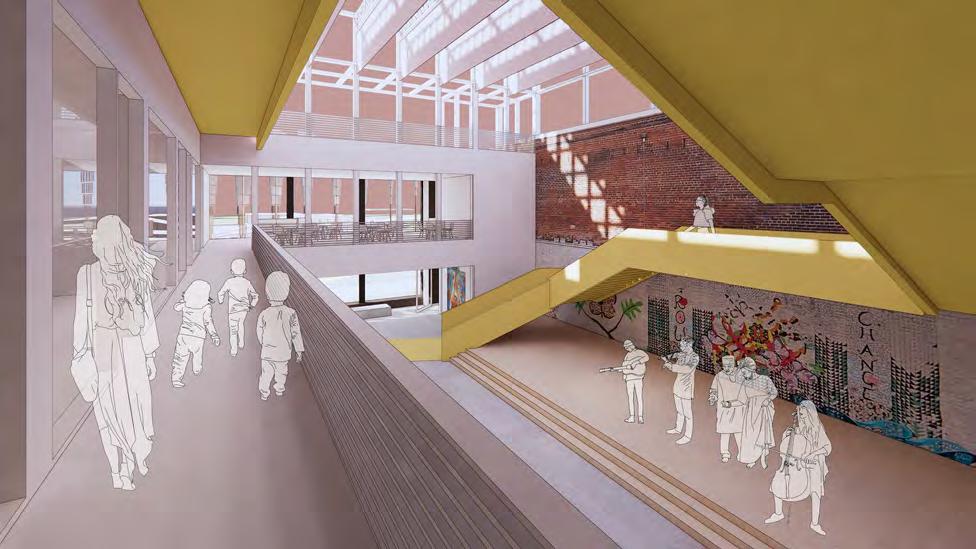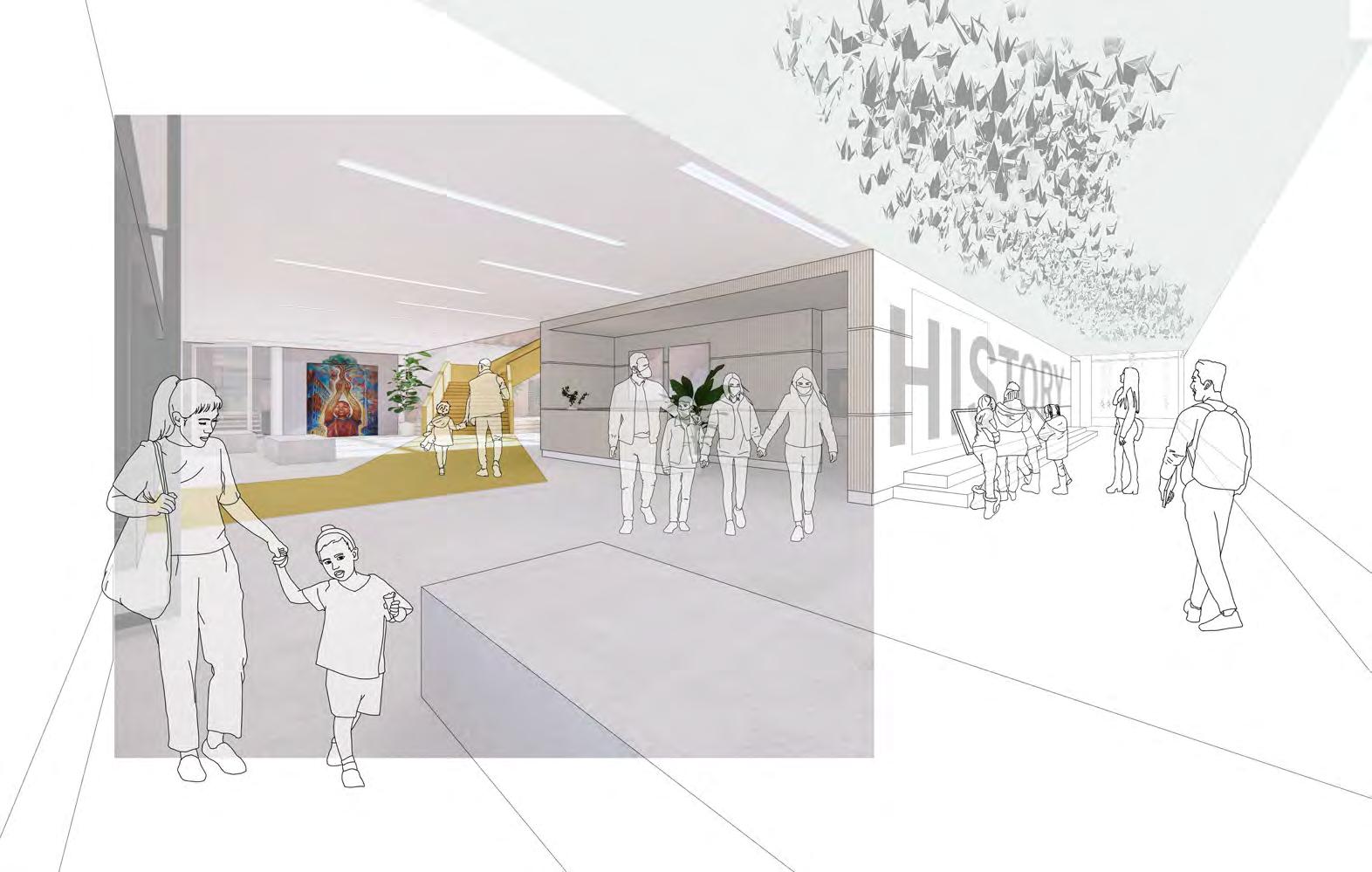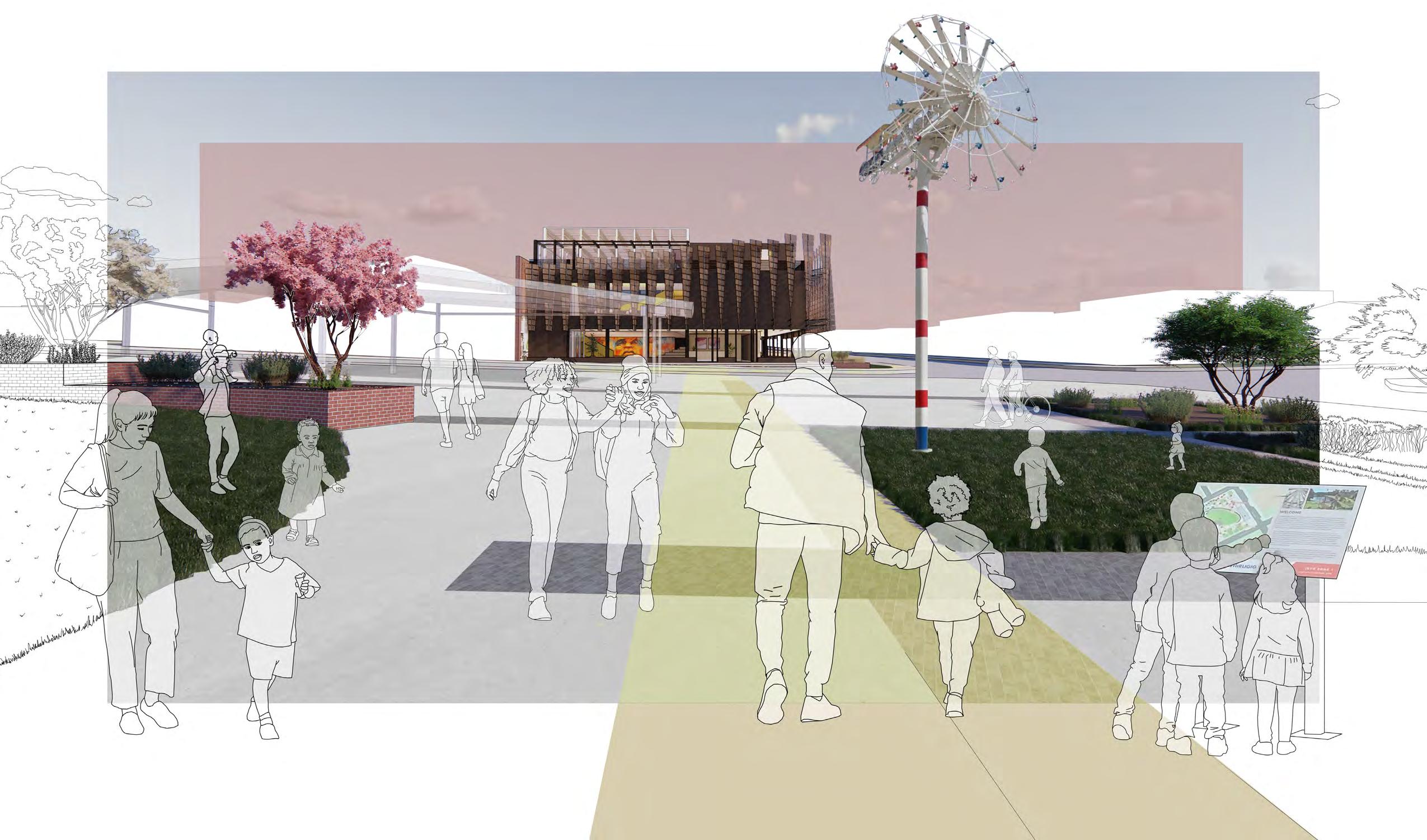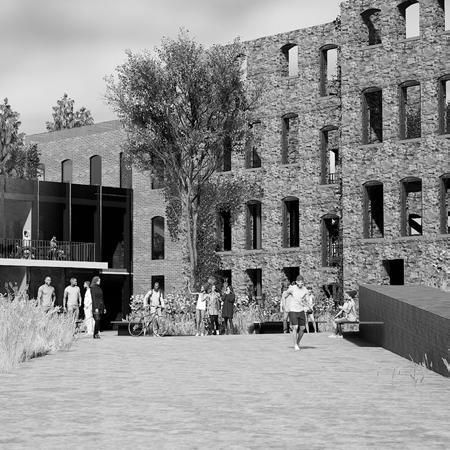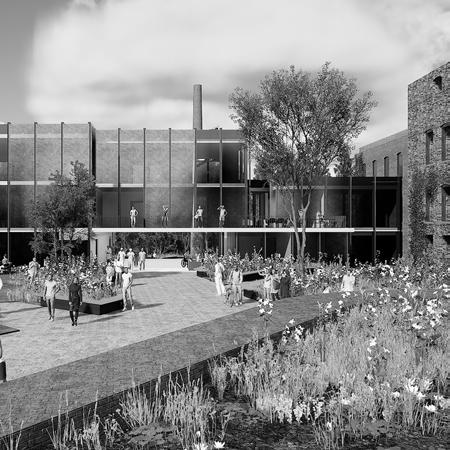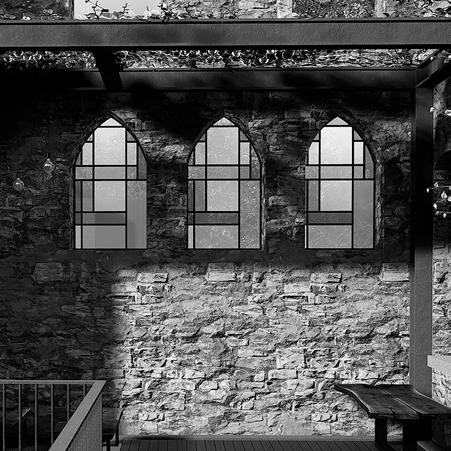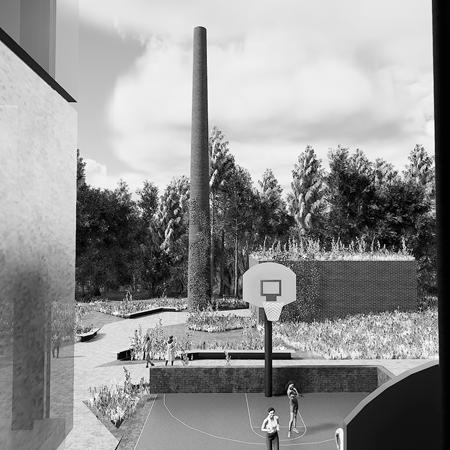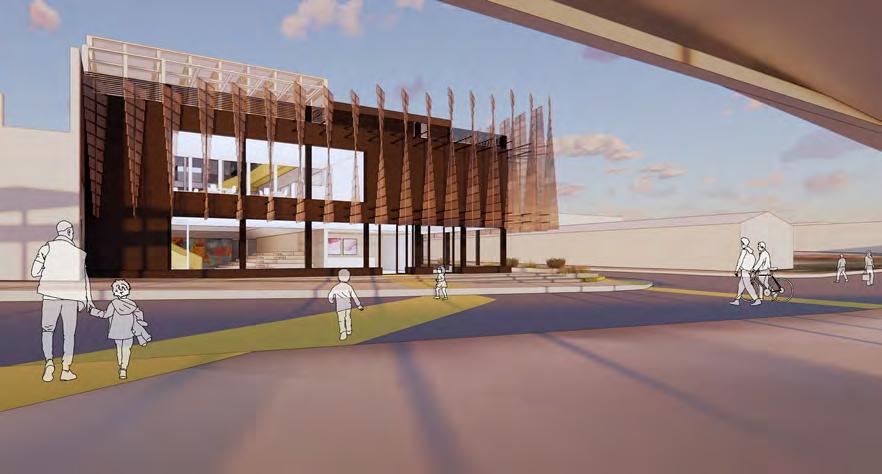
1 minute read
WILSON ART CENTER INTRODUCTION

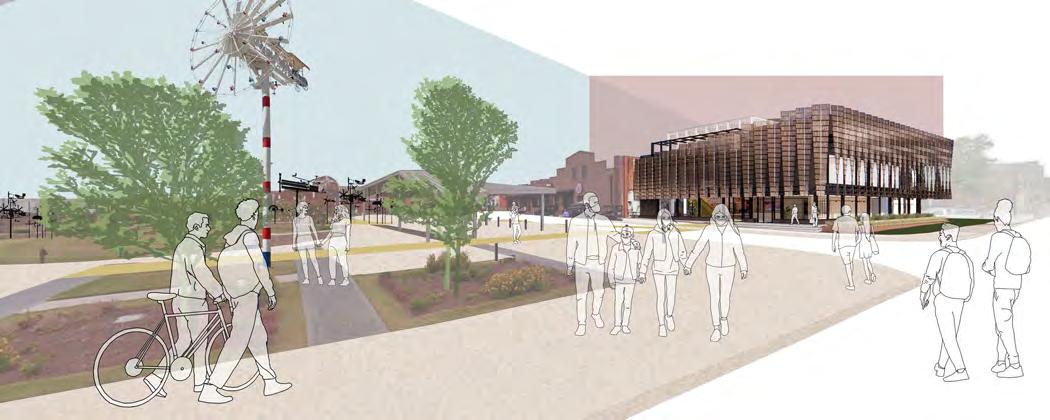
Advertisement
Wilson’s demographics are also unique with the population at 48% African Americans and 43% white. The existing art center in Wilson has the very first thing on the website is performance art, with visual arts listed second. Under performance arts you can see a variety of types such as cultural and modern dance, poetry and literature readings, comedy nights, and other variety of performances. This inspired us to focus our program and circulation on a central performance space with visual art spaces revolving around it. Our main concept was to remember to respect the history of the site while staying inclusive to the needs of the population.
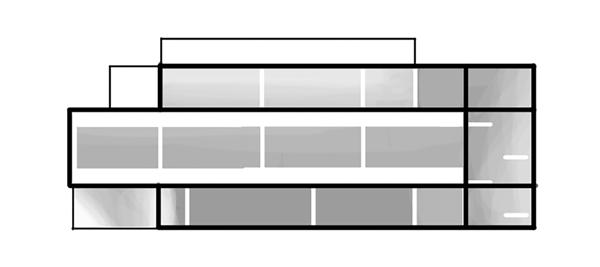
Wilson Art Center
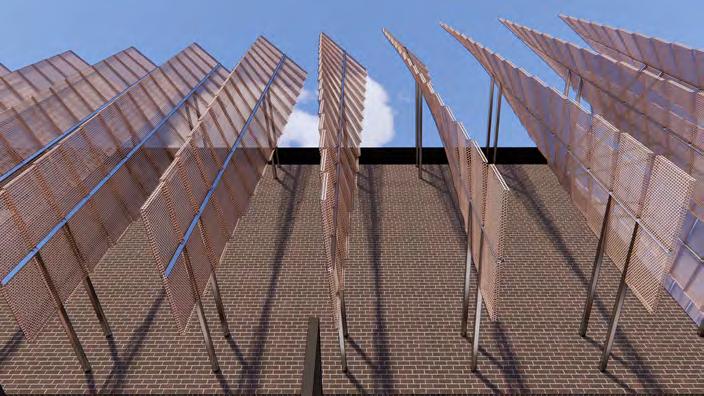

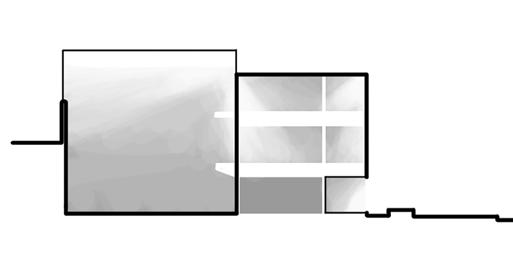
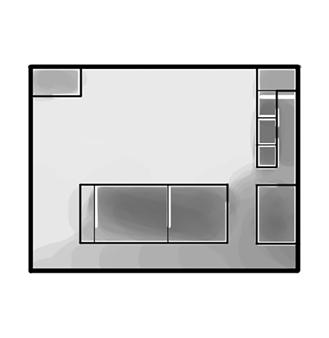
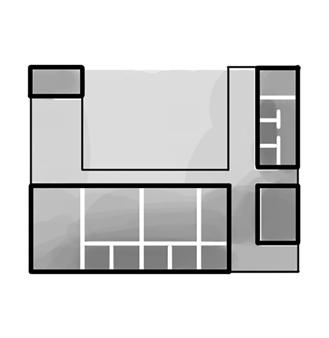
Studying the site up close, we noticed the park was built on a grid with an open field placed on the site. We decided to create a similar grid to organize our program. We created an open atrium space within the grid to allow for the program to revolve around a central performance space that is viewed easily from the park. This created a link between the enjoyment of the art of the Whirligig Park and the performance arts of the Art center. This link is emphasized by our diagrammatic yellow path. We wanted to design a building that would continue the language of the small square surrounding the park, but we wanted to keep the facade of the building light and airy, much like the whirligigs. We built modular screens that open up in certain areas and block the sun in others. These screens are inspired by the tobacco barn venting windows that allow for air and light to enter the barn to dry the tobacco. This screen facade hangs off a dark iron spot brick wall at a slight angle to allow for a transition space arriving at the center. The atrium peeks up above the facades showing the importance of this bright space.

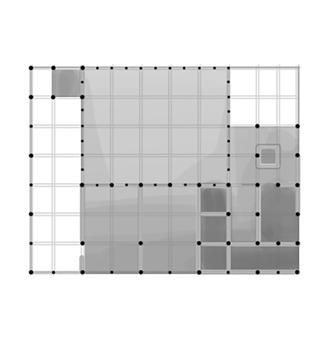
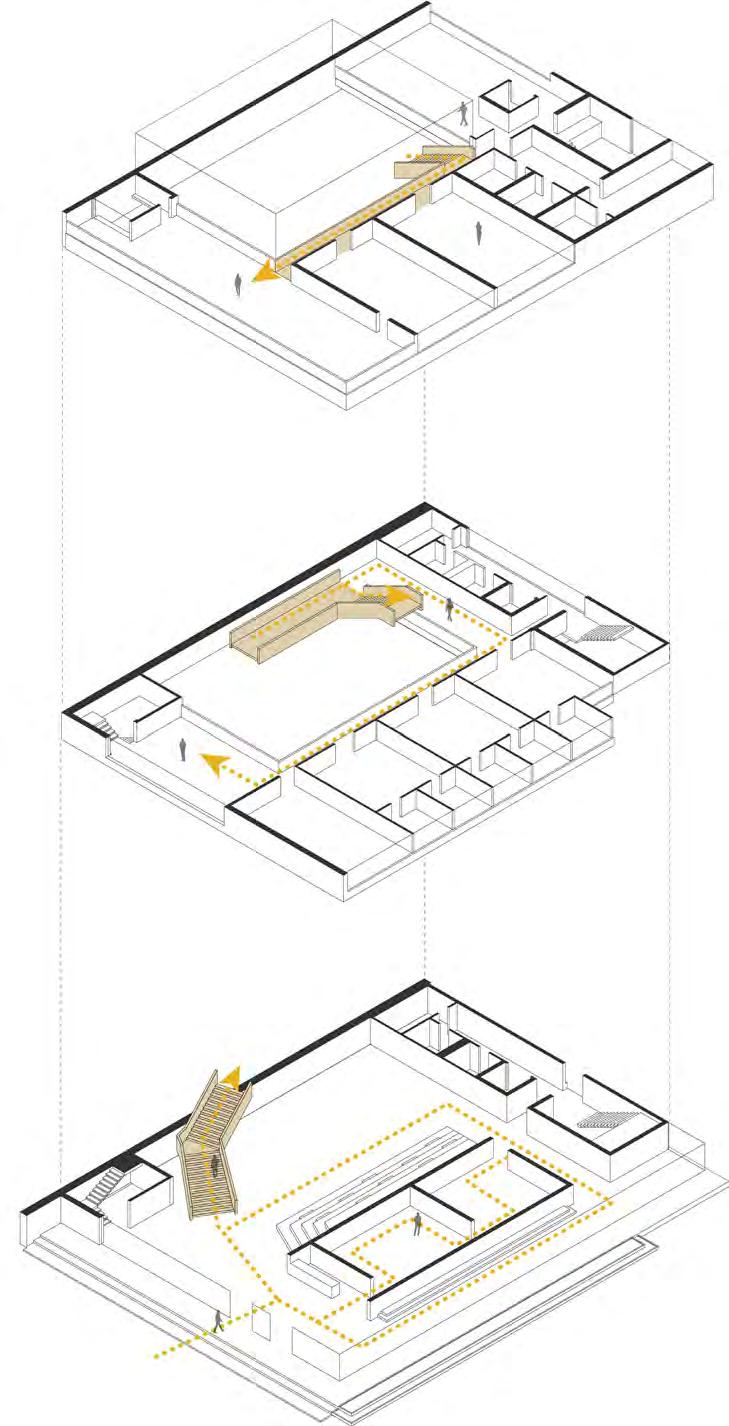
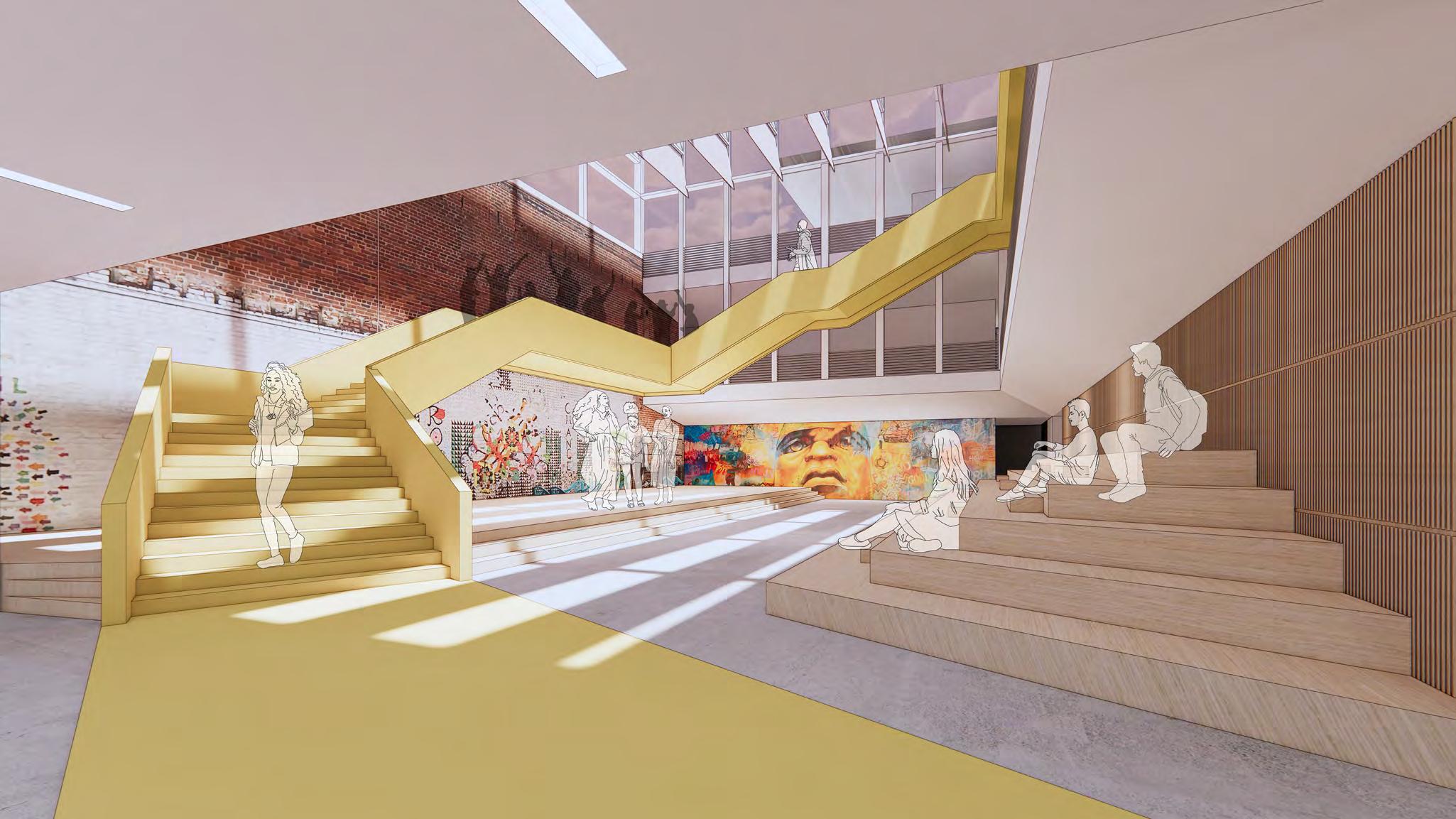
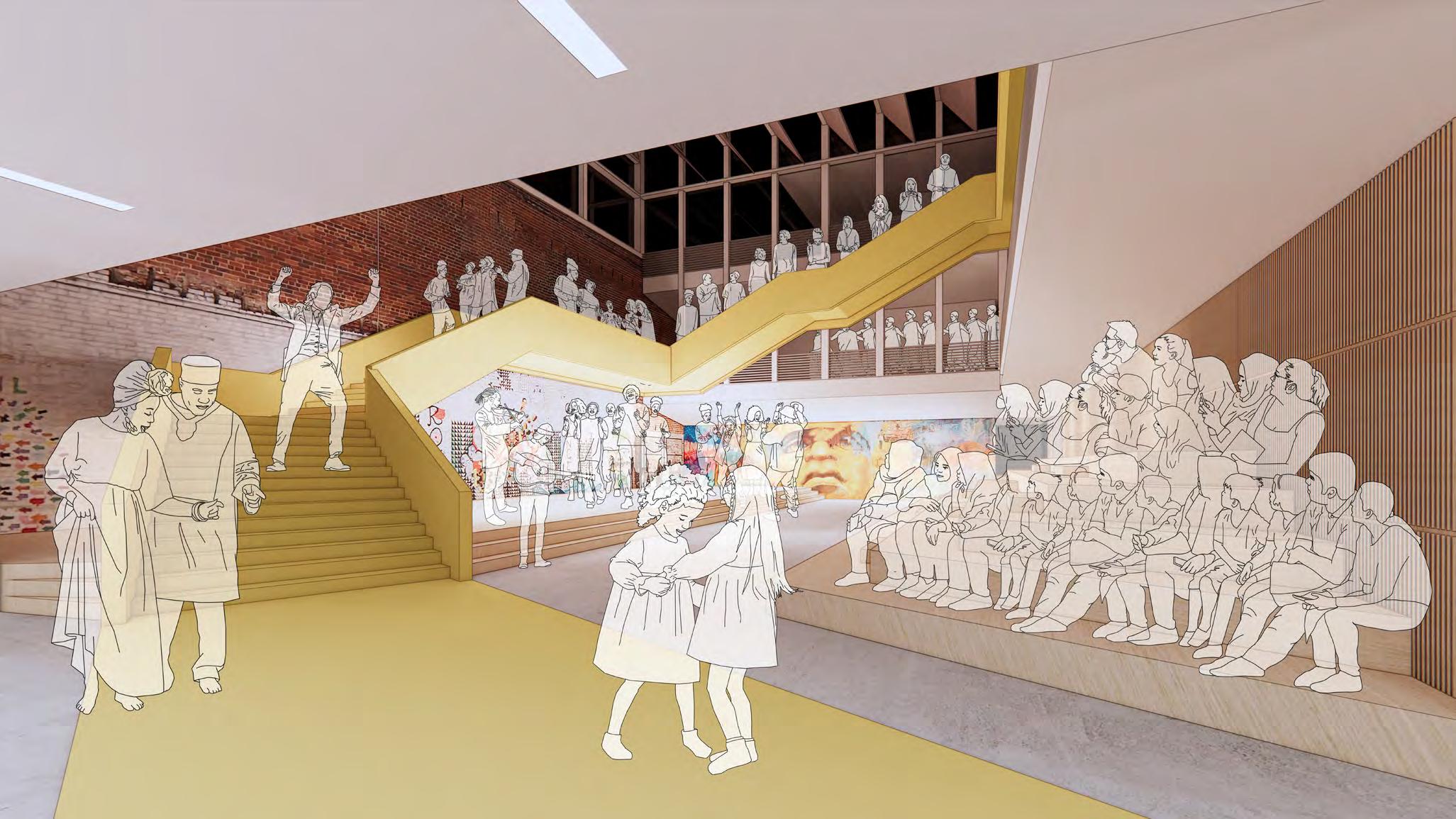
The performance space is surrounded with the circulation stair with a stage beneath it, allowing for multiple views and perspectives into the performances. The galleries are tucked under the rest of the program, acting like a plinth raising up the maker spaces on the second and third floors. The history gallery lines the outside of the plinth of the main galleries. This allows for people walking from the parking lot to the Whirligig park to be intrigued and invited into the art center. We wanted to create an inviting and inclusive center for people of all ages, races, cultural groups and more, to perform, create, and experience art in the small town of Wilson.

